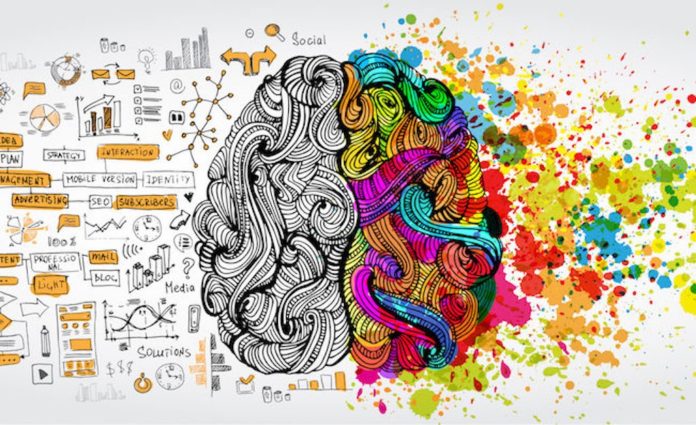The interview is part of the ISSIP’s June Newsletter. It is a conversation between ISSIP Editor, Michele Tomic with Payal Vaidya.
Payal Vaidya is strategic creative leader and hybrid designer with global experience in transforming organizations through holistic solutions.

Michele Tomic – Please tell us about yourself and your career journey – it has been an amazing story starting with your undergraduate degrees in Graphic Design and Business. How did your interest and focus develop?
Payal Vaidya – Growing up in a family of entrepreneurs, studying business was a natural progression.

During my undergrad, I started working at a playschool and summer camp, where I created experiences to teach kids things they would remember while engaging in playtime. My interest in creating things took me from graphic design to advertising and design firms such as Ogilvy and Publicis, where I had opportunities to work on global campaigns for P&G, L’Oréal, Unilever and other multinational companies.
Along with ideating and creating, I enjoyed the process of research and strategic development as it gave more meaning to my work as a designer. Being curious, trying to understand behaviors and motivations – and introspecting the ‘why’ behind everything, and enjoying the process led me to design thinking and service design.
MT – There does not seem to be general agreement on a precise definition of design thinking; there are variations across disciplinary cultures, and different meanings depending on its context. How do you define Design Thinking?
PV – For me, design thinking is a strategic and creative problem-solving process. It has a human-centered core and encourages organizations to focus on the people they’re creating for, which leads to better processes, products and services. The iterative nature itself gives us permission to challenge assumptions and redefine problems in an attempt to identify alternative approaches without the fear of failure.
It is a way of thinking and working, as well as a collection of hands-on methods. It helps us keep a check on cognitive biases and observe without judgement to develop empathy with the target audience.
MT – You recently co-founded a new venture – The Thinking Hats Innovation Consultancy – very timely. How does it fit your career and life plan?
PV – My business partner Priya Gopal and I, both enjoy working with a holistic approach to solve problems, one that includes people, processes and infrastructure. We’ve observed that in most organizations, the innovation engine is missing several critical components and needs an all-inclusive approach, one that includes a strong brand, customer-centricity, and employee investment.
With that at the core – we launched ‘The Thinking Hats, an Innovation Consultancy’. Our mission is to empower companies to innovate holistically by keeping humans at the center of everything they do, to grow responsibly and sustainably.
Companies need productive and motivated employees to add value to the business, drive culture, and communicate brand values to bring in customers. This intersection among the three elements – brand, customer and employee – informs our business model. We want to drive innovation in companies – big and small – by creating positive and effective brand, customer and employee experiences and help build products, services and cultures that delight customers and employees equally.
MT – What are you hearing from business leaders and others about their concerns and next steps to move forward in the post Covid19 new normal?
PV – Every company – big or small, has been forced to innovate almost overnight. We are seeing so many iterations and different innovative models come alive every day. Companies are paying attention to their employees and customers like never before.
Leaders are looking for new ways to manage their teams remotely. As teams are still getting used to remote work, the uncertainty of the situation is raising concerns among employees – working extra hours, feeling burnt out, excessive screen time, no work-life balance, over-communication, inclusivity and stressful factors such as the racial and the economic divide and its impact on the black communities, are making the policy makers in corporations and enterprises revisit and rethink their diversity and inclusion policies.
The ones who are reopening, are talking about the structure – How are they allocating resources? Are the customers going back to the physical spaces? How are businesses thinking of integrating between physical and digital? There are more questions than answers and rightly so as none of us have experienced this before. A McKinsey article even recommended having a ‘PLAN-AHEAD TEAM’ much like the military, for crises planning.
MT – We understand that design thinking in not an algorithm, there is no single, right and absolute answer. How important is creativity in this process?
PV – We humans thrive on solving complex challenges, exploring possibilities and innovating new ways of doing things. Creativity is integral to the design thinking process and allows for making experimentation more enjoyable and failure a little less fearful. Ideation and brainstorming techniques give us permission to believe that everything is possible even though the outcomes are not predictable.
More companies are turning to implementing design thinking into everyday work. This problem-solving approach focuses on challenges to improve anything from the design of a water bottle to the design of a community water system. Design thinking becomes effective because it promotes a collaborative approach. It brings people from different parts of the organization together for their different knowledge, expertise, and input on how to solve a problem. By combining those ingredients together, you can come up with new and creative ways to solve a problem.
MT – How can firms use brand design and innovation to meet current challenges?
PV – Brand design is necessary for creating successful brand experiences. Brand design includes every touch-point with the customer… packaging, labeling, the logo, the digital experience, the retail experience, the service experience, and so on. Brand design is the fusion of insight and imagination to create products and services with the purpose of promising relevant and differentiated Customer experiences.
The brand’s concept should inform the strategic framework that creates product solutions, experiences, and the brand portfolio. Through innovation strategies, businesses can implement relevant marketing projects that empathize, connect and engage with their customers at different touch-points.
MT – Since we are all largely working remotely, what are your suggestions for those who are only slowly adapting, regardless of their business field?
PV – In the past we’ve seen employers offer perks such as standing desks, nap pods, “bring your dog to work day” and free lunch. Many of these “perks” have focused on the physical office space which are no longer relevant today. As more companies think about working remotely for longer, now is the time to reset Employee Experiences to create a more meaningful and lasting emotional connection between the employee and their employer. Thinking about team management, collaboration and communication are crucial. Building trust, creating a sense of community and engagement are more important than ever during these uncertain times.
MT – What is your advice for current college students? Recent college graduates? Any college programs or courses you would suggest they add to their ‘toolboxes’?
PV – The world needs great designers and leaders who can solve wicked problems. Critical thinking, creativity and empathy are my top three recommended attributes for all designers and non-designers. The future of work is digital, so learning software that can translate your thinking to doing is super important.
Along with technical skills, I would urge them to develop soft skills such as emotional intelligence, communication, collaboration, adaptability and time management to become great leaders. Be engaged in communities, have conversations with people from diverse backgrounds and cultures, check biases and embrace empathy. These tools are truly helpful in any and every field. As someone once said to me – The essence of great leadership is influence, not authority.
MT – What are your goals for your work with ISSIP?You began chairing the Service Design Speaker Series in November?
PV – It’s been a pleasure chairing and hosting the Service Design Speaker Series and we’ve had a great first season. Through this series, we are trying to bridge the gap between students and the industry and find opportunities for them to learn from each other. So far, we’ve engaged with our members and formed a community that connects on common areas of interest to have dialogues from across the United States, Europe and India. We have taken a pause from May to evaluate the needs of our members and see how we can better engage and provide value through the Service Design SIG.






















